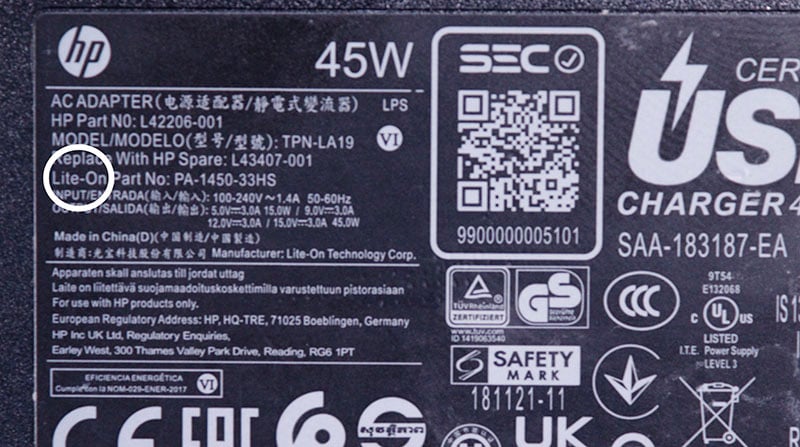Guest Contributor: Jay Haugen, Account Executive
For many school IT Directors, a penny saved is a penny spent on Chromebook maintenance. But how do you maintain a fleet of devices when your budget doesn't make any cents? Managing the lifecycle of Chromebooks can be challenging under any circumstances, with reckless student destruction and model expiration dates, but there are a few ways to work around a low budget.
It's All About the Benjamins
Unfortunately, there's no pot of gold at the end of a secret rainbow here; $$ is scarce, and with much of the pandemic assistance ending, it's likely to stay that way. Nevertheless, there are still federal and state grants that are worth checking out, as well as aid offered by Chromebook manufacturers like Dell.
Schools have long relied upon the kindness of parents — especially those with low budgets — so a little bit of creative fundraising could also provide a nice budget supplement. Now, we're not going so far as to suggest bake sales or pledge drives (although...), but setting up a Technology Fund that asks parents to contribute a little extra to tools that will further their children's education is one option. Another could be instituting a Chromebook insurance policy, where parents are given the choice to pay a one-time fee that covers their child's device repairs; opting out means they take responsibility for the total repair costs incurred by their darling little monster angel. Which seems like the better deal?

Failing to Prepare is Preparing to Fail
A man, a plan, a canal, Panama; a little strategizing can go a long way when it comes to managing the lifecycle of a Chromebook fleet. After all, these models come with an expiration date, after which they will have little value in a post-pandemic flooded market. Thus, the goal should be to wring as much use as possible out of these machines before chucking them for new ones.
While it might be simplest to merely issue students devices that will stick with them throughout their educational career, there are a few other options to consider, each of which comes with pros and cons. A hand-me-down system is never popular with the cool kids, but what worked to save money on textbooks can also save money on Chromebooks. New devices go to the older kids (who are, in theory, more responsible), then get passed down a grade each year, until the unit's lifecycle is complete. At that time, the units can be recycled or submitted to a buyback program. The process is ever and ongoing, but ensures that those with the most need for the best tech get it, while also getting plenty of use out of aging devices.
As far as allocation, having a cart system that essentially functions as a mobile lab allows for fewer devices needed, as well places them only where they are needed — hopefully resulting in less breakage and lower repair costs. However, this takes remote learning completely off the table. The flip side of that is One-to-One Take Home, where each student gets a Chromebook that they are allowed to bring home, thus giving greater flexibility for teachers, but elevating the risk for lost adapters and all the problems that come with droppage — cracked screens, missing keys, damaged ports, and any amount of inventive ways that kids find to mutilate these machines. What works will depend on your tolerance for risk and reward.

Don't Judge a Chromebook Part By Its Cover
Deep down, beneath the green skin and bad haircut, Herman Munster was a pretty productive guy. He held down a steady job at at a funeral home, owned a large, gothic house, and helped raise a little werewolf boy. For schools with small budgets, fully functional Grade B or C parts can provide a low-cost alternative, despite any cosmetic imperfections. How good of an alternative? In general, the savings can amount to 20-40% every time you drop a grade — and again, that's for parts that have been tested to be fully functional.
Sure, a scratched palmrest or scuffed screen might not win any beauty contests, but they'll work just fine for a student that was probably going to rough up their Chromebook at least a little bit anyway over the course of a school year. So what are the differences in grading? A handy reference for ChromebookParts.com's own grading system can be found here.
When it comes to those pesky lost or damaged adapters, another option to consider is LiteOn replacements. LiteOn not only produces adapters under their own brand, but also for many of the major Chromebook manufacturers, including Dell, Acer, HP, and Lenovo. Thus, what you're getting is virtually identical to the OEM part, and is UL Certified. The only difference is the label, and even looking closely at that manufacturer OEM label will often reveal LiteOn's involvement (shown in above image).
***
Regardless of your school's financial situation, it's always good to save some cash. Have any additional examples or advice for IT directors dealing with a small budget? Leave your suggestions in the comments below!

-2.png?width=264&height=229&name=new%20logo%20mark%20(4)-2.png)
